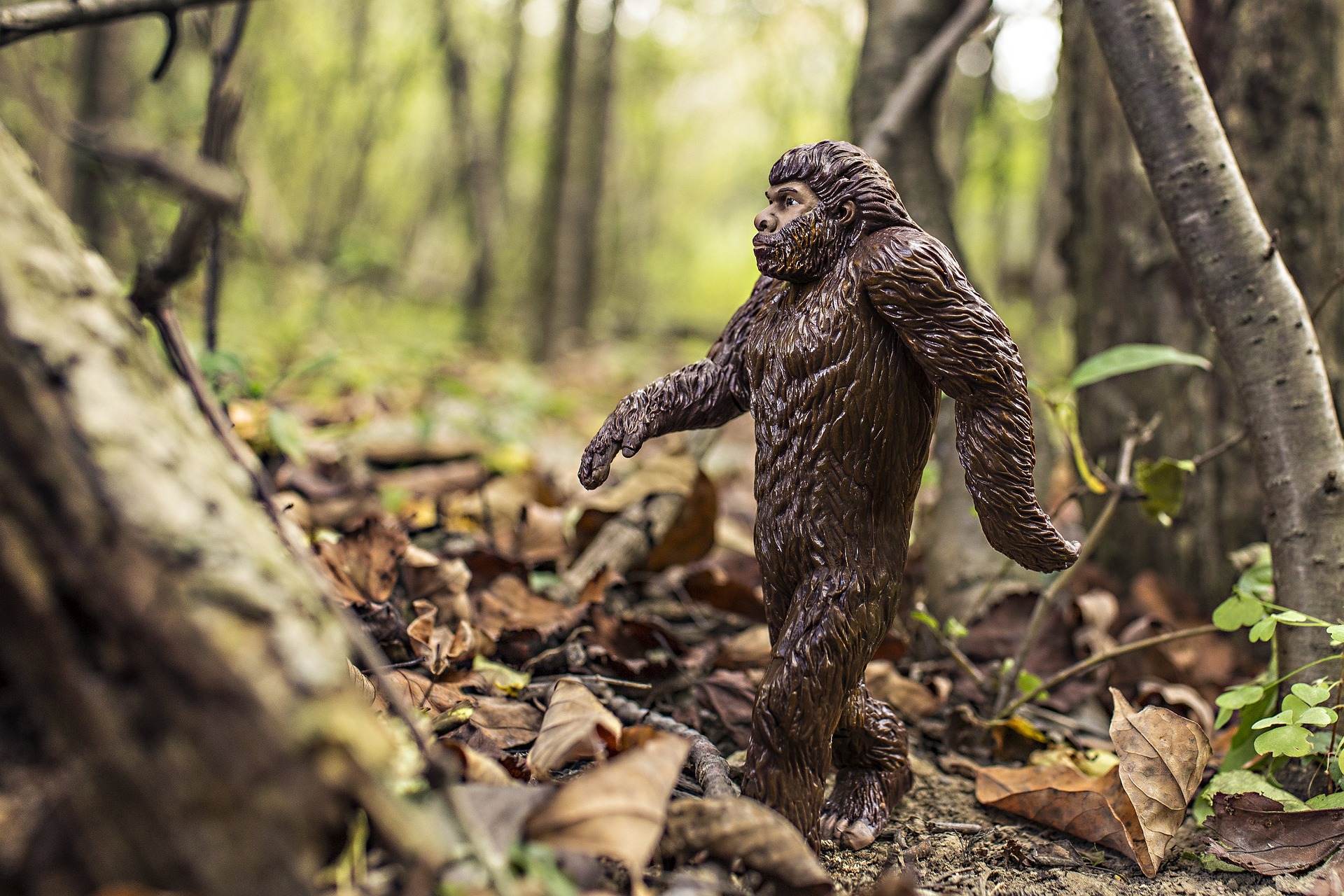The sasquatch—nicknamed Bigfoot—is undoubtedly the most iconic cryptid of all time. This bipedal, apelike monster supposedly roams the forests of North America, appearing only to a lucky few. To enthusiasts, the creature is the missing evolutionary link between apes and humans. To all else, it is a fixture of pop culture, a sort of meme from before memes existed. Surprisingly, according to a 2020 survey, 11% of US adults believe in its existence.
The Bigfoot myth owes much of its cultural relevance to the Patterson-Gimlin film, a 1967 short motion picture that supposedly depicts a sasquatch walking along Bluff Creek, a tributary in northern California. Since its release, the Patterson-Gimlin film has been a topic of debate between cryptozoologists and scientists, who obviously dismiss it as a hoax. But is there any validity to the film?
The Origins of the Patterson-Gimlin Film
Roger Patterson was fascinated by Bigfoot prior to the film being shot. He had spent nearly a decade studying cryptids, even self-publishing the book Do Abominable Snowmen of America Really Exist? in 1966. His good friend Robert Gimlin was a skeptic. But in October of 1967, he agreed to join Patterson on an exhibition to Six Rivers National Forest, where sightings of the creature had recently been reported. The pair’s goal was to capture footage of a sasquatch.
By some stroke of luck, they supposedly accomplished just that. According to Gimlin, around 1:30pm on October 20, the two were horseback riding along Bluff Creek when they encountered the sasquatch and subsequently captured what has become history’s most iconic cryptid footage. When the creature had disappeared into the woods, the two made plaster casts of its footprints.
Note: The plaster casts have attracted skepticism from the scientific community, with primate expert John Napier claiming that the prints were “totally at variance with [Bigfoot’s] calculated height.”
The Aftershock of the Patterson-Gimlin Film

Patterson hoped that his footage would irrevocably prove to the world that Bigfoot existed; his expectation was shot down when the majority of the scientific community refused to even view it. Instead, the Patterson-Gimlin film became a defining work within cryptozoologist circles.
Unfortunately, Roger Patterson died of cancer in 1972. Until his death, he maintained that his footage depicted a genuine sasquatch. Robert Gilmin is still alive today, and he too attests that the film is not a hoax. However, in a 1999 telephone interview, he did say, “I was totally convinced no one could fool me. And of course I’m an older man now… I think there could have been the possibility [of a hoax], but it would have to be really well planned by Roger.”
In determining whether or not the Patterson-Gimlin film is a hoax, people often point to the testimonies of two additional people, which we’ll detail below.
Enter Philip Morris, the Supposed Creator of the Bigfoot Costume Seen in the Patterson-Gimlin Film

In a 2002 interview with North Carolina radio station WBT, a man named Philip Morris—owner of Morris Costumes—claimed that in 1967, Roger Patterson commissioned him to create an ape suit. He would tell the story again in a TV Land documentary on Bigfoot.
“[Patterson] said the costume was for a prank, but I thought that was pretty odd because these were expensive suits,” said Morris. “I was watching TV when I saw Patterson and his film on the news. I called my wife from the other room and said, ‘Look, it’s our gorilla costume.'”
So why, if he was aware of the hoax as early as 1967, did Morris wait so long to reveal the truth? “As a costume and special-effects producer, I have an ethical code I have to uphold,” he said. “I couldn’t go out telling secrets and expect magicians to trust me with their props. That is why I didn’t say anything. Plus I thought he would come clean in a few weeks.”
Just as Patterson and Gimlin could not prove that the figure in the film was a genuine sasquatch, Morris could not prove that he created the costume. He presented no documentation of the transaction that supposedly took place between himself and Patterson.
Was the Sasquatch in the Patterson-Gimlin Film Actually Bob Heironimus?

On January 30, 1999, Bob Heironimus, a friend of Patterson, confessed to a Yakima, Washington newspaper that he played Bigfoot in the film. He stated, “I’m telling the truth. I’m tired after thirty-seven years.”
In a later interview with the Washington Post, he claimed, “It’s time to let this thing go. I’ve been burdened with this for 36 years, seeing the film clip on TV numerous times. Somebody’s making lots of money off this, except for me. But that’s not the issue. The issue is that it’s time to finally let people know the truth…”
Others corroborate Heironimus’s claims. His nephew John Miller, for example, says he saw an ape suit in Heironimus’s car only days after the footage was shot. And Ross Bohannon, a friend of Heironimus, says that in 1968, Heironimus confessed privately that he was the man in the suit.
Like the testimony of Morris, no one can prove Heironimus’s story. And proponents of the Patterson-Gimlin film’s legitimacy point out that his height does not match that of the figure in the footage.
So Is the Patterson-Gimlin Film Legit or Not?
The answer to this question is entirely dependent on whether or not you believe in the existence of Bigfoot. If the creature does indeed exist, it’s not impossible that it appeared to Patterson and Gimlin while they were on a sasquatch hunt. (It’s just very coincidental.) If it doesn’t exist—and there’s plenty of reason to think that it doesn’t—then, of course, the film is fake.
Either way, the Patterson-Gimlin film is an iconic oddity. It will likely continue to be talked about for decades to come.









